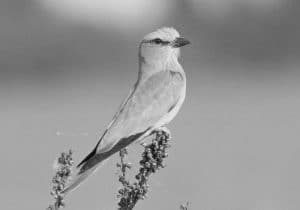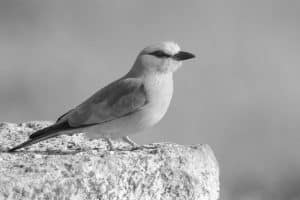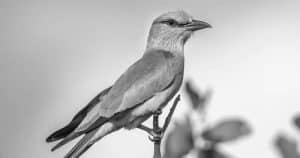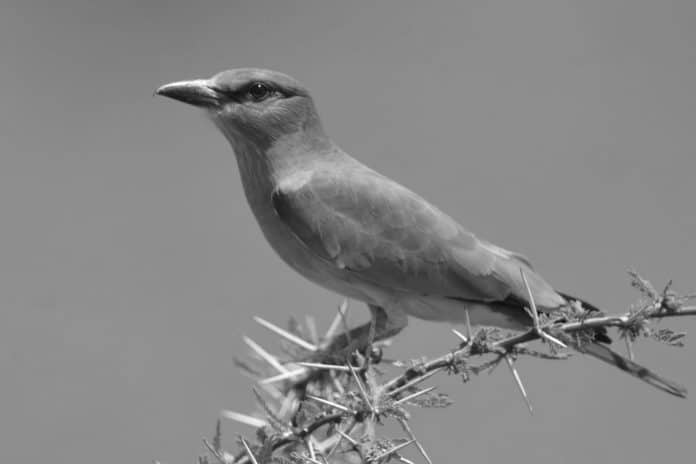Introduction to the European roller
Tanzanian grasslands are home to a stunning array of bird species, and one of the most captivating avian residents is the European roller. With its vibrant plumage and remarkable aerial displays, the European roller in Tanzania is a sight to behold for bird enthusiasts and nature lovers alike. This migratory bird travels thousands of miles to reach the rich grasslands of Tanzania, where it engages in mesmerizing aerial acrobatics and plays a vital role in the local ecosystem.

The European roller, scientifically known as Coracias garrulus, is a member of the roller family Coraciidae. This striking bird is known for its azure blue head and wings, chestnut back, and vibrant turquoise body. Its appearance is truly a marvel of nature, making it a sought-after subject for photographers and birdwatchers. The European roller is renowned for its acrobatic flight patterns and distinctive calls, adding a touch of magic to the Tanzanian skies.
The European roller’s migration to Tanzania
The European roller embarks on an extraordinary migration journey from its breeding grounds in Europe and Western Asia to its wintering grounds in sub-Saharan Africa. As summer fades into autumn, these remarkable birds take to the skies, crossing vast distances to reach the warm and bountiful lands of Tanzania. Their migration route is a testament to their resilience and navigational prowess, as they traverse diverse landscapes and overcome formidable obstacles to reach their destination.
Tanzania’s grasslands offer the European roller a hospitable environment, abundant in insect prey and suitable nesting sites. The arrival of these migratory birds is a spectacle in itself, signaling the changing seasons and the interconnectedness of ecosystems across continents. Witnessing the arrival of the European roller in Tanzania is a momentous occasion, symbolizing the enduring cycle of life and the unyielding spirit of migration.
The habitat of the European roller in Tanzanian grasslands
The grasslands of Tanzania provide an ideal habitat for the European roller, offering a diverse landscape of open plains, savannas, and woodland edges. These varied environments furnish the roller with an abundance of food sources, including grasshoppers, beetles, and other insects that form the foundation of its diet. The presence of suitable nesting sites, such as tree cavities and abandoned holes, ensures that the European roller can establish breeding territories and raise its young in this fertile land.
The interconnectedness of the grasslands and the presence of water sources further contribute to the European roller’s thriving habitat in Tanzania. The availability of perches for hunting and elevated vantage points for surveying the landscape are essential elements of the roller’s habitat, allowing it to engage in its characteristic aerial displays and courtship rituals. The grasslands of Tanzania serve as a sanctuary for the European roller, sustaining its population and contributing to the ecological balance of the region.
Aerial acrobatics and mating displays of the European roller
One of the most enchanting aspects of the European roller’s presence in Tanzania is its breathtaking aerial acrobatics and captivating mating displays. As the breeding season unfolds, male rollers engage in elaborate flight performances, spiraling and diving through the air with astonishing agility and grace. Their aerial displays are a spectacle of color and movement, as they showcase their plumage and vocalize their courtship calls to attract potential mates.
The European roller’s aerial acrobatics are a testament to its physical prowess and evolutionary adaptations, allowing it to perform intricate maneuvers and display its vibrant colors to full effect. These displays not only serve as a means of courtship but also as a form of territorial defense, signaling the roller’s presence and prowess to rival males. The skies above the Tanzanian grasslands come alive with the vibrant spectacle of the European roller’s courtship flights, offering a rare and mesmerizing sight for onlookers.
Conservation efforts for the European roller in Tanzania

The conservation of the European roller in Tanzania is of paramount importance to ensure the continued existence of this magnificent bird species. Habitat loss, climate change, and human disturbances pose significant threats to the roller’s well-being, necessitating concerted efforts to protect and preserve its grassland habitats. Conservation organizations and local communities are working tirelessly to safeguard the European roller and its environment, implementing measures to mitigate the impact of human activities and promote sustainable coexistence.
By raising awareness about the ecological significance of the European roller and its role in maintaining the balance of Tanzania’s grassland ecosystems, conservation initiatives seek to garner support for the protection of critical habitats and the enforcement of wildlife regulations. These efforts encompass habitat restoration, community engagement, and scientific research aimed at understanding the roller’s behavior and ecological requirements. Through collaborative conservation endeavors, the European roller in Tanzania stands a better chance of thriving and enchanting future generations with its presence.
Best locations for European roller sightings in Tanzania
For birdwatchers and wildlife enthusiasts seeking to witness the European roller in all its splendor, Tanzania offers a selection of prime locations renowned for their roller populations and captivating natural surroundings. The grasslands and savannas of national parks such as Serengeti, Ruaha, and Tarangire are favored habitats for the European roller, providing ample opportunities for sightings and photography. These expansive landscapes teem with diverse birdlife, offering a tapestry of sights and sounds for visitors to immerse themselves in.
The strategically positioned observation points and bird hides within these national parks afford visitors the chance to observe the European roller in its natural habitat, whether perched on a branch, foraging for insects, or engaging in its mesmerizing aerial displays. The open vistas and diverse ecosystems of these protected areas create an optimal setting for encountering the European roller and gaining a deeper appreciation for the interconnected web of life within Tanzania’s grasslands.
Photographing the European roller in Tanzania
Capturing the beauty and dynamism of the European roller through photography is a rewarding pursuit for enthusiasts who seek to immortalize the essence of this remarkable bird. Tanzania’s grasslands provide a captivating backdrop for photographing the European roller, offering an array of natural light and unspoiled landscapes to complement the bird’s vibrant plumage and aerial displays. Patience and an understanding of the roller’s behavior are essential for capturing compelling images that convey the spirit of this avian acrobat.
Photographers can take advantage of the golden hours of early morning and late afternoon, when the soft, warm light enhances the colors of the European roller and creates an enchanting ambiance in the grasslands. Framing the roller against the sweeping vistas and distinctive features of the Tanzanian landscape adds depth and context to the photographs, portraying the bird within its natural environment. By observing ethical guidelines for wildlife photography and respecting the roller’s space, photographers can create evocative images that celebrate the beauty and vitality of the European roller in Tanzania.
Ethical considerations when observing the European roller
As visitors and admirers of the European roller in Tanzania, it is paramount to approach our interactions with these birds with a sense of responsibility and respect for their well-being. Ethical considerations encompass a range of practices, from minimizing disturbances to the roller’s habitat and adhering to designated viewing areas to refraining from intrusive behaviors that may cause stress or disruption to the bird’s natural activities.
Responsible observation of the European roller involves maintaining a safe distance from nesting sites and roosting areas, using binoculars and telephoto lenses to appreciate the roller’s beauty without encroaching on its space. By refraining from excessive noise, sudden movements, or attempts to provoke the roller for a reaction, visitors can foster an atmosphere of tranquility and harmony within the bird’s habitat, allowing it to thrive undisturbed. Appreciating the European roller from a place of reverence and consideration contributes to the preservation of its natural behaviors and ensures that future generations can revel in the splendor of this avian marvel.
The significance of the European roller in Tanzanian ecosystems

The presence of the European roller in Tanzanian grasslands holds profound ecological significance, influencing the dynamics of local ecosystems and contributing to the intricate web of life within the region. As a predator of insects and small vertebrates, the roller plays a crucial role in regulating the populations of its prey species, maintaining a balance that supports the health and diversity of grassland ecosystems. Its foraging behaviors and nesting activities also influence the structure and composition of habitats, shaping the landscape and fostering biodiversity.
Furthermore, the European roller serves as an indicator species, reflecting the overall health and integrity of Tanzania’s grassland environments. By monitoring the roller’s population trends and habitat conditions, researchers and conservationists gain valuable insights into the state of the ecosystem and the potential impacts of environmental changes. The presence of the European roller in Tanzanian ecosystems is a testament to the interconnectedness of all living organisms, underscoring the need for holistic conservation efforts to safeguard the natural heritage of the region.
Conclusion
In the sprawling grasslands of Tanzania, the European roller takes center stage as a symbol of grace, resilience, and natural beauty. Its migration from distant lands, its aerial acrobatics, and its role in the intricate tapestry of ecosystems all contribute to the allure of this magnificent bird. As visitors and stewards of Tanzania’s natural wonders, we have the privilege and responsibility to appreciate and preserve the splendor of the European roller, ensuring that future generations can marvel at its azure wings and revel in the magic of its aerial displays.
The conservation of the European roller in Tanzania hinges on the collective efforts of individuals, communities, and organizations, united in their dedication to protecting the habitats and heritage that sustain this avian marvel. By championing ethical practices, supporting conservation initiatives, and fostering a deeper understanding of the roller’s significance, we can secure a future where the skies above Tanzanian grasslands continue to be adorned with the vibrant presence of the European roller, a testament to the enduring spirit of life and the enduring beauty of nature.

































